

Coordinator: Dr. hab. Joanna Mirosław-Grabowska
Address:
Instytut Nauk Geologicznych PAN
Ośrodek Badawczy w Warszawie
(Institute of Geological Sciences P.A.S., Research Centre in Warszawa )
Twarda 51/55, 00-818 Warszawa
Phone: (48) 22 6978-809
e-mail: jmirosla@twarda.pan.pl
Introduction
Institute of Geological Sciences Polish Academy of Sciences (ING PAN) conducts studies focusing on the environmental changes, evoked by natural factors such climate changes as well as human presence and activity. The studies concern on the processes and phenomena occurring in the last several hundred thousand years (during the Quaternary period) and are carried out in Central and Eastern Europe, from the Carpathians to the northern polar regions (e.g. Poland, Ukraine, Finland) as well as in America (Mexico). The environmental reconstructions are based on the multi‑proxy analyses of lake, peat bog and cave sediments, using the biological (pollen, diatoms, cladocerans, vertebrates, macrofossils) and geochemical (organic matter, stable isotopes) methods as well the archaeological data.
Staff
Team composition:
Research area
The human presence and activity modify the natural environment, among others lake conditions. This effect is manifested in the change of geochemical and biological parameters of water (eg. trophic state) and sediment (eg. organic matter content, phosphorus content, heavy metals). These parameters cause the changes in the world of aquatic plants and animals. In addition, the pollen grains of plants growing on surrounding lake, including cultivated and synanthropic plants, are accumulated in the lake sediments, providing for settlement and agriculture. The geochemical and biological analyses of the lake sediments allow the identification of the environmental changes observed in sediments of anthropogenic origin and evaluation of them in terms of range of human impact.
Projects:
Marta Wojewódka-Przybył, grant NSC “Minitura” no. 2021/05/X/ST10/00774
The development of fossil fuel energy production has disrupted the balance of many ecosystems. The extraction, storage, and combustion of these fuels have significantly impacted the air and water quality, as well as living organisms. Although coal processing and coal waste disposal have been extensively studied, there has been a lack of analysis regarding the impact of urban gasworks (based on coal coking) on aquatic ecosystems in Poland. Therefore, research was conducted to examine the influence of early urban gasworks on lakes. As part of this study, sediment cores were collected from Lake Liwieniec (Prabuty, Pomeranian Voivodeship), which had an urban gasworks located on its shore from 1908 to 1980. Two short sediment cores (approximately 50 cm) were obtained, and comprehensive geochemical, isotopic, isotopic dating, and microcrustacean analyses were conducted. The research provided a comprehensive view of the geochemical variability of Lake Liwieniec sediments over the past 70 years. Based on the collected geochemical data, it was possible to assess the degree of sediment contamination in the lake. The results indicated significant pollution in Lake Liwieniec sediments, particularly in terms of Te, Re, Se, and Ag concentrations, which exceeded values found in the Earth's crust or uncontaminated lake sediments. The examined sediments also exhibited high concentrations of As, Au, Hg, Pb, and Cd (elements potentially toxic to living organisms), as indicated by the calculated Igeo index (geoaccumulation index) suggesting strong contamination with these elements. Using other geochemical and isotopic indicators, as well as statistical analyses (such as principal component analysis), it was inferred that the enrichment of sediments with these elements resulted from their delivery from the lake's catchment, with the highest concentrations occurring during the gasworks' operation period. Furthermore, it was observed that there is likely mobilization of these elements under favorable environmental conditions, which poses an additional environmental risk.

Fig. 1. Variability diagram of principal components (PC1, PC2), Pollution Load Index (PLI), selected Geoaccumulation Index (Igeo) indicators, and selected geochemical data recorded in the PR2 profile over the last 70 years.
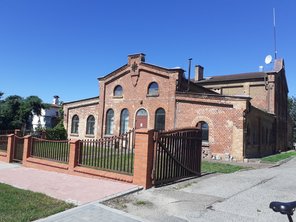
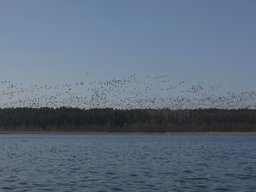
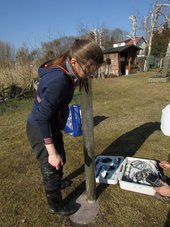
Buildings of the former gasworks in Prabuty View of Lake Liwieniec Sediment core from Lake Liwieniec
The border area of the Czech Republic, Germany and Poland, the so‑called "Black Triangle", has been strongly impacted by developed industry for several decades. Changes in lake ecosystems connected with progressive acidification after the Industrial Revolution are noted in many alpine, arctic, and subarctic waterbodies. Since ca 1900, acid deposition has played an important role in the decrease of pH. The Mały Staw and Wielki Staw lakes have been impacted by natural long‑term acidification due to poorly buffered bedrock. Both lakes were also strongly impacted by acid rain, especially since the 1960s (anthropogenic acidification); a few years later this was followed by changes in the phytoplankton communities toward an increase of diatom taxa preferring acidic conditions. The inferred pH decreased by 0.7 in Mały Staw and 0.3 in Wielki Staw. The differences in the timing of the onset of acidification and intensity are caused by the differences in the morphometry and catchment area of the lakes. Mały Staw is considerably smaller and has a greater catchment area, so a pollution load per unit of water volume is higher than in Wielki Staw. Moreover, Mały Staw is 'naturally' less acidic an more sensitive to a relatively small load of acid deposits.
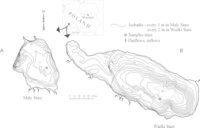
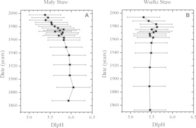
On the basis of the presence of pollen of plants, so‑called anthropogenic indicators in sediments, the settlement phases can be identify. Individual ecological groups of plants associated with human presence in the environment allow to reconstruct the various types of human activity (grazing, animal husbandry, plant cultivation). The type and intensity of the human impact in the examined area is presented in the diagram of selected anthropogenic indicators.
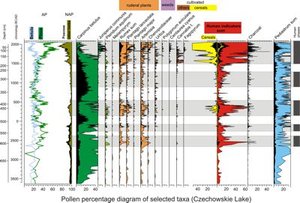
2. PALEOCLIMATE
Over the past few years, many people: researchers, politicians, economists, journalists discus about climate change. The debate is about the changes observed today, such as increases in main global air and ocean temperatures, shrinking glaciers and ice sheets surface, numerous extreme weather events (hail, tornadoes, heat waves), as well as predicting the direction and magnitude of climate change, that will occur in the future. There new questions arise: whether climate changes nowadays occurring are the results only of human activity? How did change the climate in the past, especially before the period of human interference in the environment?
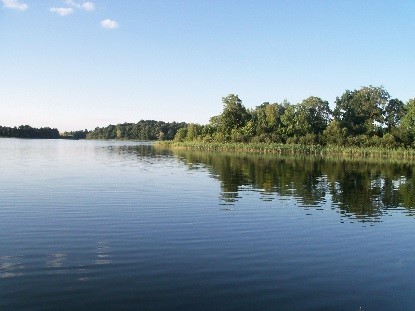
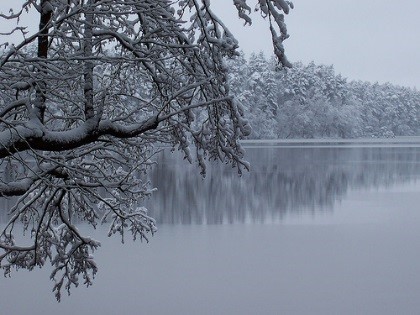
Answers to these questions are provided by paleoenvironmental studies, including paleoclimate studies, among others the lake sediments. The data show that climate change is not caused by human economic activity, but is mainly related to the natural evolution of the climate due to orbital cycles of the Earth and changes in thermohaline circulation of the oceans (THC).
3. PALEOLIMNOLOGY
The researches of lake and peat bog sediments deposited during the past, allow to follow the climate and environmental changes.
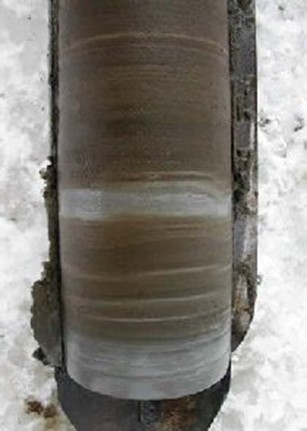
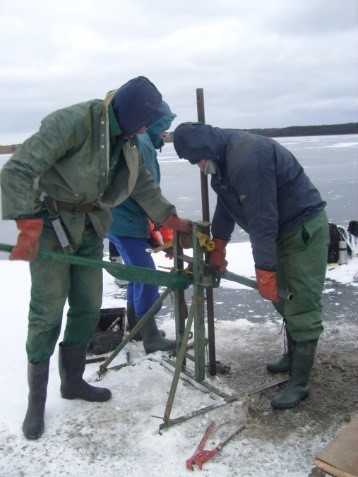
Paleolimnological studies conducted at IGS PAS enable the reconstruction of lake parameters such as: water level and temperature, trophic state, composition of aquatic vegetation, zoo- and phytoplankton, biological activity, salinity, pH. Palynological data are used to determine the history of vegetation development and climatic parameters, including the average temperature of the coldest and warmest month and the amount of annual precipitation. Additionally, studies of pollen, diatoms, Cladocera and geochemical data (including stable isotopes) allow for the determination and estimation of the impact of human economic activity on the environment (e.g. settlement phases, pollution).
Projekty:
Reconstruction of evolution of Romoty palaeolake
Romoty is the name of a sediment profile from the overgrowing lake located in Ełk Lakeland (NE Poland). The sediment core, which is 8.4 m in length, documents the development of the reservoir since the melting of dead ice and formation of the lake basin, i.e., before 13,000 years BP until it became overgrown with plants. The characteristics of the sediments changed from mineral deposits on the bottom (silty sands) to biogenic deposits consisting of dark olive calcareous detritus gyttja and light calcareous gyttja with increasing carbonate content and to a peat in the upper part. Based on the obtained data (chemical, stable isotopes, subfossil Cladocera remains, pollen), we have distinguished the three main stages of the evolution of the Romoty paleolake.The first (initial) stage includes the formation of the lake basin in the Late Glacial and early Holocene (Preboreal period). The second stage is characterized by the harmonic, natural development of the Romoty paleolake from the Boreal to Subboreal period. This stage coincides with a period of climatic warming, and the biogenic sediments accumulated in this reservoir at that time. The third stage concerns the disappearance of the lake in the late Holocene (Subatlantic period). The lake conditions declined, and the reservoir completely filled with sediments and has transformed into a mire. The characterization of each stage involves a description of environmental conditions occurring in the Romoty paleolake, particularly the Cladocera community, the chemical composition, the temperature and trophy of the water, the water level, the nature of bottom sediments, and the plants occurring in the reservoir and its surroundings. The lowest water temperature occurred in the Late Glacial and Preboreal periods. Since the Boreal period, gradual warming is observed and is expressed through a positive trend in both δ18O and δ13C and changes in both Cladocera and plant compositions. Our results suggest that the lake was deepest at the beginning of the Holocene as a result of dead ice melting (supply of melt water; lowering of the lake bottom) and/or increased precipitation (change in atmospheric circulation). The water level fell during the Atlantic period. Additionally, the cladoceran and non-pollen palynomorph data indicate low trophy followed by an increase in the mesotrophic state. The human impact was documented only by a low occurrence of pollen grains of Cerealia in the youngest sediments (Subatlantic period), suggesting a low penetration by human groups of the area near the Romoty paleolake.
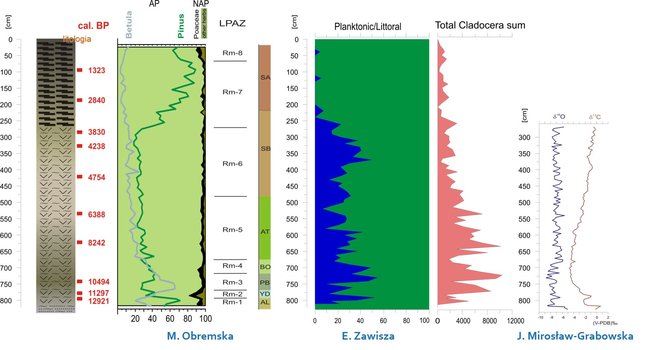
The main aim of this study was a determination of the history of the evolution of a small lake called Smolak Lake, located in the Masurian Lakeland, northern Poland. Smolak Lake is a fantastic object of study for tracking the natural development of this reservoir and the dystrophic processes. Using paleolimnology, we reconstructed the history of this lake from its origin in the Late Glacial to its current dystrophic stage (about the last 12,400 years), focussing on the ecological and geochemical processes that occurred as dystrophic conditions developed. We analyzed the geochemical and biological (cladoceran and pollen) data of the Late Glacial and Holocene lake sediments. These data allowed to determine the history of the lake and the transformation of its environmental conditions, such as zooplankton and vegetation development, trophic state, water temperature and water level fluctuation.
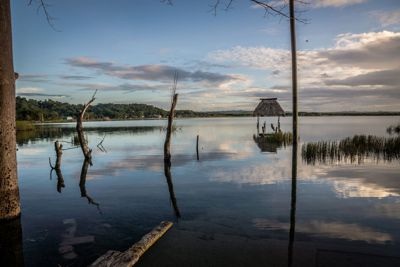
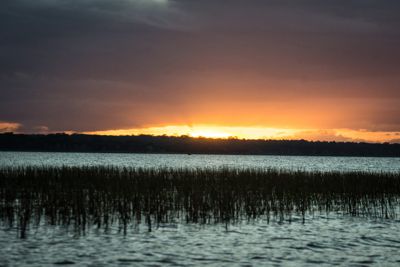
The conducted research aims to determine the characteristics and genesis of organic matter accumulated in the Eemian Interglacial and in the initial phase of the Vistula Glaciation (Vistulian), based on the results of geochemical and isotopic analysis of lake sediments. The results of isotopic and geochemical studies of organic matter supplement the data obtained from other analyses, e.g. palynological, faunal and allow for specifying the ecological changes occurring during the Eemian Interglacial. In addition, the compilation of multi-proxy analysis results allows for the development of the characteristics and evolution of the studied paleolakes.
Methods
1. Diatom analysis
Diatoms (Bacillarophyceae) are microscopic unicellular organisms and are the most diverse group of algae. Many diatoms have rather narrow ecological tolerances and optima and they are good indicators of environmental conditions (e.g. pollution, salinity, pH, nutrients, water level) as well as climate changes. Due to their short life cycle, they react quickly to environmental changes. Especially in sensitive environments, like mountain lakes, even small fluctuation of climate and/or human impact can induce huge alterations in biotic community. Different numerical methods are used to examine the relationships between the diatoms and environmental variables: reconstructing pH and trophic level of lakes, calibration models for pH and total phosphorus. The densely-sampled sequences of dated sediments enable the intensity and dynamism of lake acidity and/or eutrophication to be inferred. The results of the studies can help to estimate the effect of the human activities on the lake habitats and determine the onset of this change. It is possible to trace the rate of biotic changes in the individual lakes after reduction in sulphur and nitrogen emissions over the last decades and determine the fertility of the lakes. Diatoms are well preserved in sediments, so they are very helpful tools in palaeolimnological research.
2. Pollen analysis

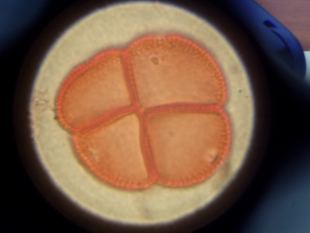
Palynological analysis comprises the study of pollen grains of plants. The outer shells of pollen grains for each species are unique and can survive in favourable conditions for thousands of years. Therefore the many plants presenting in the past are recently identified. The information enable to reconstruct 1) vegetation development, 2) past environment and 3) discover human activity and human impact on natural environment. Moreover, by using pollen analysis it is possible to reconstruct the structure of the terrestrial vegetation and therefore to validate possible sources of organic matter. The results of pollen analysis are the basis for the establishment of biostratigraphy of deposits. Lake sediments and peat bogs are particularly valuable for preserving pollen grains because they are chemically suitable and they accumulate over time.
3. Cladocera analysis
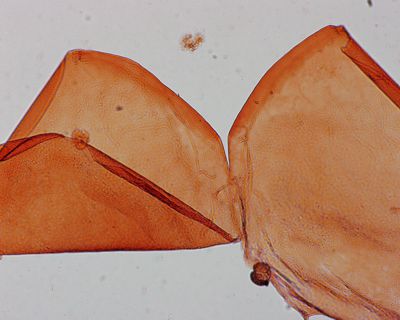
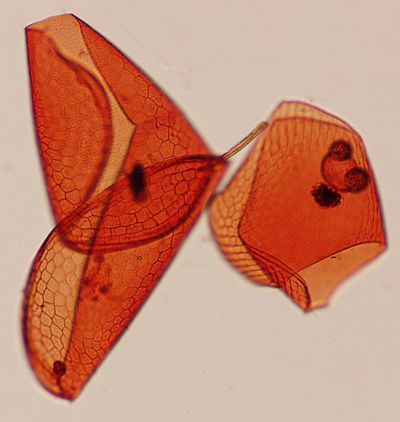
Cladocera are primitive crustaceans that are dominant among zooplankton and inhabit lakes with various chemical conditions. The presence and frequency of certain species reflect the climatic and hydrologic conditions of the lake. Fluctuations in pH correlate with faunal diversity. The fauna also responds to changes in water nutrient concentrations. Cladocera remains are often found in lacustrine sediments. Cladocera analysis has been applied many times to palaeoenvironmental reconstruction of the Late Glacial and Holocene. There have been several attempts to reconstruct water level changes based on changes in the cladoceran record because the ratio of planktonic to littoral forms reflects changes in the proportional areas of littoral and open water habitats. Cladocera analysis has also been used to estimate the trophic status of and human impact on.
4. Stable isotopes analysis
The stable isotope analyses include both the oxygen and carbon isotope analysis from carbonate deposits (lake sediments, teeth enamel), and the carbon and nitrogen analysis from organic matter. The stable isotope analysis is usefulness for reconstruction of past climate, environment and dietary habits of fossil animals.
The oxygen isotope composition is determined in part by the atmospheric component of the global hydrological cycle (air mass source), and reflects the volume-weighted mean oxygen isotopic composition of catchment precipitation, and the precipitation/evaporation ratio. The carbon isotope composition of authigenic carbonates is determined by exchange between CO2 in water and the atmosphere, by the volume of incoming groundwater and the influx of dissolved carbonates, by photosynthesis/ respiration of aquatic plants and plankton within the lake, and by CO2 production during the decay of organic matter. The carbon and nitrogen stable isotopes of organic matter are used to define the changes in the bioproductivity and source of organic matter transported into the lake. The lake evolution, such as sediment infilling and overgrowth, partially caused by climate deterioration, have recorded in stable isotopic and chemical element composition as well as in the features of organic matter.
Science for all
For many years, IGS PAS employees have been organizing courses and trainings (both group and individual) on the identification of subfossil fauna of Cladocera and their taxonomy. An indispensable element of the workshops is the interpretation possibilities of the cladocera fauna and its usefulness in paleoclimatic and paleecological reconstructions.
In cooperation with Climate-KIC, the group members carry out pro-social tasks related to the promotion of low-emission economy and the fight against climate change. Every year, we organize Climathon in Warsaw (a global, 24-hour event based on the haccathon formula, in 2016, 59 cities from 6 continents took part in the action). Since 2017, we have been the coordinator of the Pioneers into Practice program, which connects professionals specializing in the area of climate change with public, private, scientific and research organizations and non-governmental organizations operating in the broadly understood climate protection sector.